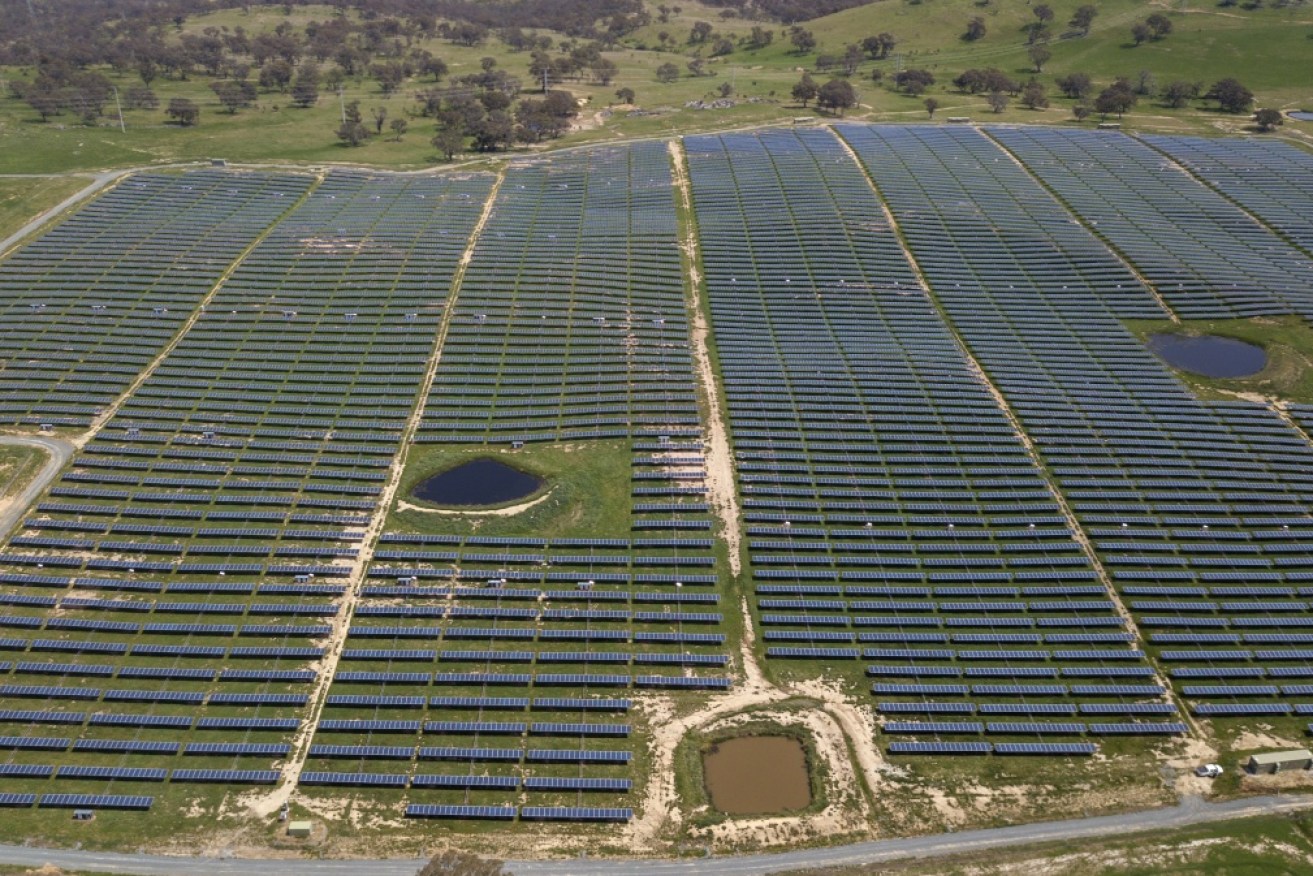Zero-carbon export model can help Australia lead way to net-zero emissions

Investment in solar and wind farms has dropped in 2023, as projects wait for vital infrastructure. Photo: AAP Photo: AAP
Australia could reduce the carbon footprint of the Asia-Pacific by switching to a “cleaner export bundle” of renewable electricity, green hydrogen and green metals, scientists say.
New research issued on Friday is the first to quantify the energy, land and water requirements of a new zero-carbon export model for Australia.
About half of global emissions come from energy use by Asia-Pacific countries, according to the International Energy Agency.
Further, the region is expected to account for almost two-thirds of global energy demand growth over the next two decades, prompting scientists to look for new ways to power economies as countries set targets for net-zero emissions.
Australia, as the world’s largest exporter of coal, liquefied natural gas, iron ore and alumina, plays a key role in meeting the region’s needs.
The study published in Science Direct shows the exports are also tied to significant emissions at the point of use or processing, accounting for about 8.6 per cent of the Asia-Pacific’s carbon footprint.
Australia could instead export zero-carbon energy and products, lead author Paul Burke from the Australian National University Crawford School of Public Policy said.
Exports could include renewable electricity sent offshore via sub-sea cables, such as the Sun Cable to Singapore.
These cables would outclass the world’s longest subsea power cable currently, the North Sea Link power connection between the United Kingdom and Norway.
Linking Darwin and Singapore, the project is being developed by a group of private investors led by Mike Cannon-Brookes’ Grok Ventures and Andrew Forrest’s Squadron Energy.
Zero-carbon fuels such as green hydrogen are highly sought after by export partners including Japan and South Korea, and further afield by industrial powerhouse Germany.
The export of metals processed from Australian ores using renewable energy is another part of the proposed model.
“Australia is one of the world’s largest exporters of fossil fuels, and we have a real chance to shift to a much cleaner export bundle,” Professor Burke said.
Multi-gigawatt solar and wind power plants in northern Australia could generate some of the cheapest electricity in the world using technologies that are already available and that are also improving over time.
The switch to the new zero-carbon export model would require using about two per cent of Australia’s land mass for solar and wind farms to power the new industries and cleaner manufacturing, researchers found.
-AAP








